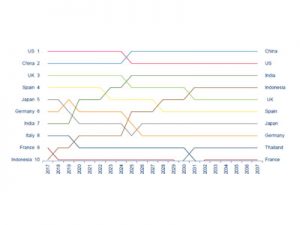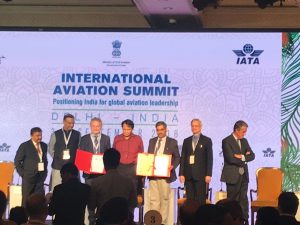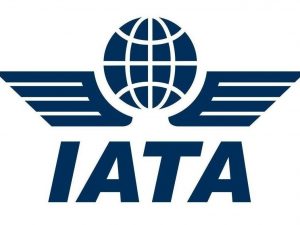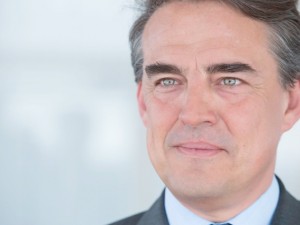The International Air Transport Association (IATA) has announced that Willie Walsh has officially taken on the role of Director General of the organization. He succeeds Alexandre de Juniac. “I am passionate about our industry and about the critical work that IATA does on behalf of its members, never more so than during the COVID-19 crisis. IATA has been at the forefront of efforts to restart global connectivity, including developing the IATA Travel Pass. Less visible but of equal importance, airlines continue to rely on IATA’s financial settlement systems, Timatic and other vital services to support their day-to-day operations. I am grateful to Alexandre for leaving behind a strong organization and a motivated team. Together, the IATA team is absolutely focused on restoring the freedom of movement that airlines provide to billions of people around the world. That means your freedom to visit friends and family, to meet critical business partners, to secure and retain vital contracts, and to explore our wonderful planet,” said Walsh.
Read More »IATA working with WHO, ICAO on COVID testing
IATA is working with the International Civil Aviation Organization (ICAO) and the World Health Organization (WHO) to put in place scalable, affordable and fast testing systems, revealed Conrad Clifford, Regional Vice-President Asia Pacific, IATA. Alexandre De Juniac, Director General & CEO, IATA had also said last week, “We have a solution to open borders while mitigating the risk of importing COVID-19 through air travel. That is universal testing. There is testing technology that aligns with our requirements for speed, accuracy, affordability, scalability and ease of use in the travel process. And we are seeing momentum towards implementation.”
Read More »India to become third largest air passenger market by 2024: IATA
India is set to become the third largest air passenger market, surpassing the UK around 2024, according to a recent study by IATA’s ‘20-Year Air Passenger Forecast’. The International Air Transport Association (IATA) revealed that present trends in air transport suggest passenger numbers could double to 8.2 billion in 2037. Over the next two decades, the forecast anticipates a 3.5% compound annual growth rate (CAGR), leading to a doubling in passenger numbers from today’s levels. The Asia-Pacific region will drive the biggest growth with more than half the total number of new passengers over the next 20 years coming from these markets. Growth in this market is being driven by a combination of continued robust economic growth, improvements in household incomes and favorable population and demographic profiles. “Aviation is growing, and that is generating huge benefits for the world. A doubling of air passengers in the next 20 years could support 100 million jobs globally. There are two important things that stand out about this year’s forecast. Firstly, we are seeing a geographical reshuffling of world air traffic to the East. And secondly, we foresee a significant negative impact on the growth and benefits of aviation if tough and restrictive protectionist measures are implemented,” said Alexandre de Juniac, Director General and CEO, IATA.
Read More »Growth forecasts see Indian aviation receive 300% increase in passenger traffic by 2037
The International Air Transport Association (IATA), at International Aviation Summit held in Delhi, called on the government of India to maximise the potential contribution of aviation to India’s development by addressing infrastructure constraints that limit growth and government policies that impose excessive costs on aviation. Growth forecasts for India indicate a trebling of passenger demand by 2037 when some 500 million people are expected to fly to, from or within India. Already aviation supports 7.5 million Indian jobs and Rs 30 billion of GDP (1.5% of the economy). The Summit, being co-hosted by the Indian Ministry of Civil Aviation (MoCA), Airports Authority India (AAI) and IATA, commemorates the approaching milestone of 50-straight months of double digit domestic growth for Indian aviation. “While it is easy to find Indian passengers who want to fly, it’s very difficult for airlines to make money in this market. India’s social and economic development needs airlines to be able to profitably accommodate growing demand. We must address infrastructure constraints that limit growth and government policies that deviate from global standards and drive up the cost of connectivity,” said Alexandre de Juniac, Director General and CEO, IATA. India’s aviation infrastructure has benefitted from significant upgrades in recent years. “It is clear that India has the capacity to develop effective infrastructure. But the job is not done. Passenger numbers will grow. And infrastructure must not be a bottleneck in fulfilling the needs of travelers and the economy,” said de Juniac who called for work in four priority areas – develop a comprehensive and strategic master plan for India’s airports, remove all obstacles to successfully opening Navi Mumbai as quickly as possible, modernise airport processes using technology in …
Read More »October passenger demand bounces back after weather-hit September
Passenger demand in airlines rose 7.2 per cent in October compared to the same month last year, according to global passenger traffic results by International Air Transport Association (IATA). The capacity grew 6.2 per cent and load factor climbed 0.8 percentage points to 80.8 per cent, a record for the month. October’s performance was a strong rebound after the hurricane-related disruptions in September. Domestic and international travel growth largely was in balance. “As expected, the recent severe weather in the American region had only a temporary impact on the healthy travel demand we have seen this year, and we remain on course for another year of above-trend growth,” said Alexandre de Juniac, IATA’s Director General and CEO. For Asia-Pacific carriers, the large markets in India, China and Japan mean that domestic travel accounts for 45 per cent of the region’s operations. Asia-Pacific airlines led all regions with traffic growth of 10.3 per cent compared to the year-ago period, which was up from an 8.7 per cent rise in September. Capacity climbed 8.4 per cent and load factor rose 1.3 percentage points to 78.0 per cent.
Read More »Double-digit growth in India’s domestic passenger demand in Aug ’17
Indian airlines achieved a 36th consecutive month of double-digit domestic traffic growth as demand rose by 16 per cent, according to data released by the International Air Transport Association (IATA). The demand for domestic travel climbed 7.6 per cent this August as compared to August 2016, on pace with the 7.5 per cent growth recorded in July. Capacity rose 6.9 per cent and load factor increased 0.6 percentage points to 84.5 per cent. All markets reported demand increases with the exception of Australia. The international passenger demand for August rose 7.0 per cent compared to August 2016. All regions recorded increases, led by airlines in Latin America. Capacity climbed 6.1 per cent and load factor edged up 0.8 percentage points to 84.5 per cent. “Following the strong summer traffic season in the northern hemisphere, 2017 is on course to be another year of strong traffic growth. However, some important demand drivers are easing, particularly lower fares. As we head towards the end of the year we still expect growth to continue, but potentially at a slower pace,” said Alexandre de Juniac, Director General and CEO, IATA. The global passenger traffic data for August indicated that demand climbed 7.2 per cent as compared to August 2016. The total capacity increased by 6.3 per cent and load factor climbed 0.7 percentage points to 84.5 per cent, which was just below the record for the month set in 2015.
Read More »Air travel recorded fastest first-half growth in 12 years
Demand for domestic travel climbed 8.2% in June compared to June 2016, up slightly from the 7.9% growth seen in May. India led all markets with a 20.3% rise in domestic traffic in June. However, the very strong upward trend in traffic has slowed since the country’s unexpected ‘demonetisation’ in November 2016. India’s streak of year-on-year double-digit traffic growth may have ended with June. June capacity increased 7.0%, and load factor rose 0.9 percentage points to 84.3%. In a nutshell, air travel recorded its fastest first-half growth in 12 years, pushing load factors to record highs. And the peak northern summer travel season is likely to be record-breaking. The International Air Transport Association (IATA) announced global passenger traffic data for June showing that demand (measured in total revenue passenger kilometers or RPKs) rose by 7.8% compared to the year-ago period. “This is all good news. The demand for travel is strong and that, in turn, will make a positive contribution to the global economy. This growth will also further expose infrastructure deficiencies. In every part of the world airport and air navigation infrastructure is struggling to cope with demand. There are plenty of examples linking connectivity and economic prosperity. But few governments have been able to deliver on the imperatives of sufficient capacity, quality aligned with user needs and affordability. This year’s strong growth is a reminder that there is no time to lose,” said Alexandre de Juniac, IATA’s Director General and CEO. June capacity (available seat kilometers or ASKs) increased by 6.5%, and load factor rose 1.0 percentage point to 81.9%. For the first six months of 2017, the industry experienced a 12-year high in traffic growth (7.9%) and a …
Read More »Passenger demand hits 5-year peak in January
The International Air Transport Association (IATA) announced global passenger traffic results for January 2017 showing demand (revenue passenger kilometers) rose 9.6% compared to January 2016. This was the strongest increase in more than five years. Domestic air travel climbed 9.9% in January year-on-year. India led domestic all markets in year-to-year growth for the 22nd month in a row; January traffic soared 26.6%, marking the 15th consecutive month of 20%-plus annual growth. Demand is being stimulated by strong flight frequency. Capacity increased 8.7% and load factor was 80.1%, up 0.9% percentage points. January international passenger traffic surged 9.3% compared to the year-ago period. Capacity rose 7.5% and load factor climbed 1.3 percentage point to 80.3%. All regions recorded year-over-year increases in demand led by the Middle East and Asia Pacific. Asia Pacific carriers recorded an increase of 10.9% compared to January 2016, helped by the impact of Lunar New Year-related travel and solid growth on routes within Asia. Capacity rose 8.9%, pushing up load factor 1.5 percentage points to 81.4%. “2017 is off to a very strong start, with demand at levels not seen since 2011. This is supported by the upturn in the global economic cycle and a return to a more normal environment after the terrorism and political ‘shock’ events seen in early 2016,” said Alexandre de Juniac, IATA’s Director General and CEO. IATA estimates the holiday-related travel contributed up to one-half a percentage point in extra demand growth. January capacity rose 8.0%, and load factor climbed 1.2 percentage points to 80.2%. IATA (International Air Transport Association) represents some 265 airlines comprising 83 per cent of global air traffic.
Read More »IATA seeks subsided rate of GST on flights
Global airlines’ body IATA has sought an abated rate of GST on flight tickets, saying the tax burden on the aviation sector was already high and the GST regime should conform to global standards and principles. Maintaining that the International Air Transport Association (IATA) has been ‘working closely’ with the Goods and Services Tax (GST) Secretariat here to address some issues of concern to airlines, Director General of IATA, Alexandre de Juniac said, “The GST regime needs to adhere to international standards and principles.” “We have called for a zero-rating for international flights when the GST comes into effect next April. This seems unlikely. To limit its damage to the sector’s competitiveness, we would at least hope for abatement in the rate,” de Juniac said. He said the airlines in India faced “an onerous tax burden, including the imposition of service tax to services rendered abroad, including those for overflight charges, global distribution systems and international tickets.” This, he said, was “in contravention of international principles established by governments” through the UN body International Civil Aviation Organisation (ICAO). The IATA Director General and CEO, who met top officials of the government and Indian carriers during his two-day visit here, said he had shared these and other concerns with the government.
Read More »IATA elects De Juniac as DG & CEO
Alexandre de Juniac, Chairman and CEO of Air France-KLM, will succeed Tony Tyler as IATA’s Director General and CEO effective from September 1, 2016. De Juniac will be the seventh person to lead IATA as its Director General. “I thank my industry colleagues for their confidence in confirming me as IATA’s next Director General and CEO. Aviation is a vitally important industry—connecting economies, facilitating business, creating jobs and linking people. My aim is to help airlines to be even more successful businesses creating even greater economic and social value. I want all of our members to have a future that is even safer, more efficient, sustainable and increasingly profitable,” said de Juniac. De Juniac will join IATA from Air France-KLM where has served as Chairman and CEO since 2013. Prior to that, he was the Chairman and CEO of Air France (2011-2013). From 1995 to 2009 de Juniac held various leadership positions in Thales and has also held positions in the French government. IATA’s next AGM and World Transport Summit will be hosted by Aeromexico in Cancun, Mexico from 4-6 June 2017.
Read More » Tourism Breaking News
Tourism Breaking News





